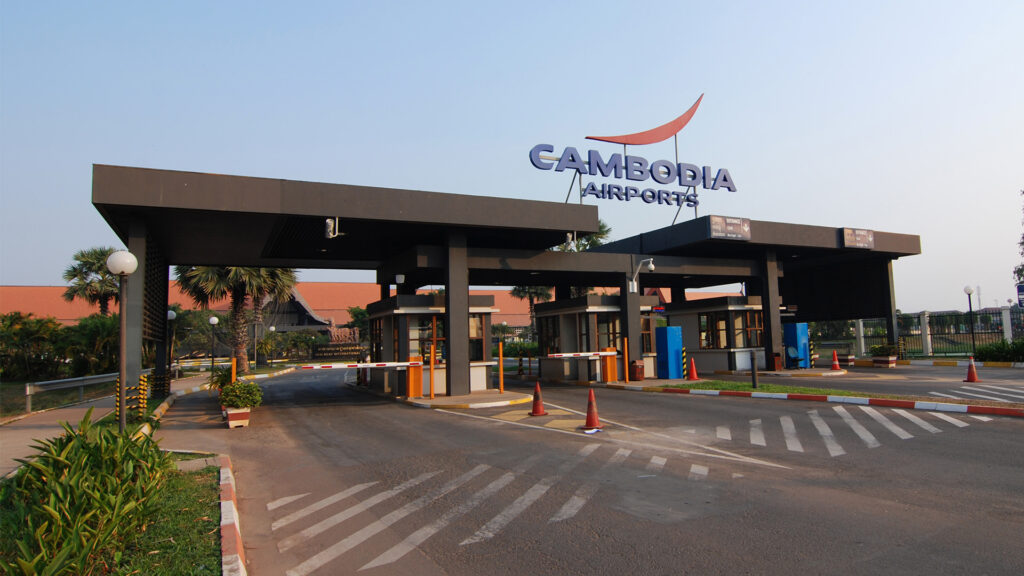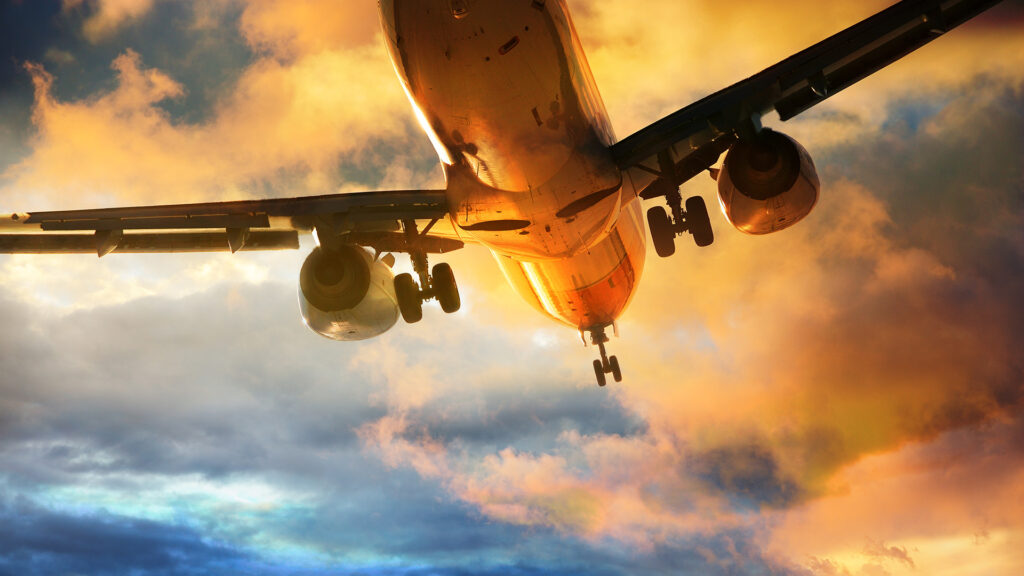
Sustainable Aviation: Adjusted CORSIA Baseline from 2024 onwards – how it impacts airlines
At the recent 41st ICAO Assembly in Montreal, countries agreed to a new CORSIA baseline for the first and second CORSIA implementation phases (2024-2035) of 85% of CO2 emissions in 2019, and revised percentages for growth factors to be used for calculating offsetting requirements from 2030 onwards. In this briefing, we discuss the significance of the new developments and what this means for the airline industry.
CORSIA in a Nutshell
The Carbon Offsetting and Reduction Scheme for International Aviation (CORSIA) has been adopted as part of the broader package of measures to help the International Civil Aviation Organization (ICAO) achieve its long-term aspirational growth (LTAG) objective for international aviation of net zero carbon emissions by 2050. CORSIA utilises emissions units from the carbon markets to offset the amount of carbon emissions that cannot be reduced through the use of a basket of measures which include technological improvements, operational improvements, and use of Sustainable Aviation Fuels (SAF).
CORSIA’s approach is based on comparing the total CO2 emissions of an airline operator in a year against a baseline level of CO2 emissions. Any international aviation CO2 emissions covered by CORSIA which exceeds the baseline level represents the sector’s offsetting requirements for that year.
Fluctuations in the CORSIA Baseline
In 2016, the CORSIA baseline was set at an average of 2019 and 2020 flying emissions. However, air traffic in 2020 was significantly impacted by COVID-19 – ICAO reported a total decline of 65.5% of passenger traffic in 2020. Adopting the average of 2019 and 2020 flying emissions would essentially present a lower baseline. This means that airlines would have to offset more emissions.
According to the International Air Transport Association (IATA), the increased CORSIA compliance costs would have risked the sustainable recovery of international aviation following COVID-19. On the other hand, setting the baseline with only reference to 2019 flying emissions has been criticised by environmental groups for delaying climate action and reducing overall mitigation achieved by CORSIA by about 25% to 75%.1
As such, in 2020, ICAO determined that the baseline would be calculated solely by reference to 2019 emissions during the pilot phase from 2021 to 2023. ICAO considered that using 2020 emissions figures would cause an inappropriate economic burden on carriers and contravene the spirit of the CORSIA framework agreed in 2016 (as actual 2020 emissions were far lower than what had been expected when the pandemic occurred). The baseline to be applied to subsequent phases after 2023 was to be determined during the CORSIA periodic review in 2022.
Outcome of the 41st ICAO Assembly
At the 41st ICAO Assembly (held in Montreal from 29 September to 7 October 2022), it was agreed that for the pilot phase (2021-2023), 2019 emissions would be used as the CORSIA baseline, and in relation to the first and second CORSIA implementation phases (2024-2035), 85% of 2019 emissions would be used as the CORSIA baseline.2 In other words, 2020 emissions are not referenced and will be excluded from baseline calculations. Additionally, it was agreed that the percentage of an operator’s growth factors would be revised – with an increased focus on sectoral rather than individual operator’s growth factors.
The baseline is expected to be reviewed again from September 2025 onwards.
Impact on the aviation industry: what do airlines need to know?
The following key points are worth noting:
1. HIGHER BASELINE TARGETS (BUT NOT AS HIGH AS IT COULD HAVE BEEN): for the first and second CORSIA implementation phases, airlines will have to offset international flight emissions in excess of 85% of their 2019 emissions level. This will lead to larger offset obligations than the requirements prior to the 41st Assembly, which only called for offset purchases once emissions reach the full 2019 output. The 85% threshold is, however, still below what the threshold would have been under CORSIA’s original plan, which required carriers to offset any emissions above their average output for 2019 and 2020. As offsetting is generally done via the purchase and cancellation of CORSIA Eligible Emissions Units (EEUs), the quantity of EEUs that an airline will be required to purchase and cancel will be lower than if the baseline calculation involves an average of 2019 and 2020 emissions.
2. GROWTH STILL POSSIBLE: the new CORSIA baseline strikes a balance between ensuring that airlines are not overly burdened by CORSIA compliance costs on one hand, while ensuring that airlines are on track to achieve sustainable growth. The revisions in growth factors, with an increased focus on sectoral rather than individual growth of operators, suggest that operators that grow faster than other operators are less impacted in terms of the increase in offsetting requirements.3 This should be encouraging to airlines that are focussed on post-COVID-19 recovery and avoids penalising faster-growing airlines.
3. CRITICISM FROM SOME QUARTERS: notwithstanding what should be considered a significant industry achievement, the new CORSIA baseline has nonetheless been criticised by certain quarters suggesting that it is not stringent enough to be compliant with a Paris Agreement warming trajectory.4 It has also been said that the new baseline may depress airlines’ emissions unit demand by 30% compared to ICAO’s original plan.5 Ultimately, it is a delicate exercise by ICAO to juggle many competing considerations. What is clear is that the baseline should be consistently reviewed against the rate of recovery of airlines from the pandemic and correspondingly the emissions levels of airlines. If for instance emissions levels from international aviation return to pre-COVID-19 levels, the basis for the adjusted baseline would likely fall away. This then invites the question of whether the next scheduled review of the baseline, three years from now in 2025, is too distant.
4. RISK OF DOUBLE COUNTING: an airline operator under the jurisdiction of a CORSIA state-party will have GHG emissions that arise from international aviation, but the EEUs that airline operators use will arise from GHG emission reductions or removals achieved at a domestic/national level. As such, there is a clear risk of double counting if the same emission reduction or removal is claimed by an airline operator seeking to fulfil its CORSIA obligations as well as the country hosting the offset project to achieve its nationally determined contributions (NDCs) under the Paris Agreement. For this reason, post-2021 vintage EEUs, which covers offsetting obligations under the first and second phases, will be subject to a corresponding adjustment. This is how double counting between the CORSIA framework and the Paris Agreement accounting framework is managed. Accordingly, EEUs of post-2021 vintages are expected to be priced higher. From this perspective, the new CORSIA baseline and consequentially the lower quantity of EEUs which an airline needs to purchase may be a welcome development for the industry.
5. EMISSION UNITS ARE HERE TO STAY – AT LEAST FOR NOW: in terms of how CORSIA offsetting will occur, EEUs will continue to play a pivotal role in assisting airlines meet such requirements, at least in the near future. ICAO’s LTAG report suggests that SAF has the greatest potential to reduce CO2 emissions from international aviation and in the achievement of the LTAG.6 While operators can indeed reduce their CORSIA offsetting requirements by claiming emissions reductions from CORSIA Eligible Fuels, the role of EEUs in assisting airlines to offset emissions should not be undermined. A recent report has highlighted how the cost of reducing CO2 emissions using SAF is currently 50 to 100 times more than that of using emissions units.7
6. SAF NEEDS TO BE SCALED…AND FAST: although the pricing of EEUs could well increase as demand grows, and SAF costs may decrease as techniques develop and improve and state subsidy or speculative capital is provided, this takes time and the gap is unlikely to be fully closed in the immediate future. In order for the aviation industry to meet it sustainability goals, the widespread use of SAF will need to be commonplace with IATA estimating that perhaps 65% of the mitigation needed for net zero emissions in 2050 will come from SAF8. A report also shows that in order to achieve a commitment by airlines and corporate customers of an SAF volume of just 10% out of total jet fuel demand by 2030 (noting that a SAF volume of 13% to 15% of total jet fuel demand is needed to achieve credible 1.5°C targets), over 300 SAF plants need to be built and SAF production needs to increase by 5 to 6 times from currently planned SAF projects.9 An additional investment of between $49 to $91 billion would be required over the next three decades from fuel producers for SAF production plants to bring global aviation to net zero by 2050.10
Book and claim systems are likely to play an important role in the growth of SAF usage and the development of this ecosystem. Other factors likely to be crucial in driving demand and supply of SAF include the role of industry stakeholders such as airlines, airports and fuel producers in sharing the risk of supplying new technologies to ramp up supply of SAF, as well as the role of governments in developing policies in parallel to ICAO’s LTAG (such as implementing SAF usage targets and bridging the cost differential of SAF and fossil jet fuel).
How can HFW help your business?
We support our aviation clients to adapt and comply with the sustainability challenges being created by international, regional and national regulatory bodies which seek to regulate and limit GHG emissions. HFW is working with our clients to develop new projects and products designed to drive and gain commercial opportunity from this evolving legal and technological landscape. Whether through the use and availability of SAF, enhancing the efficiency and effectiveness of transit orientated performance through electrification, or the purchase of emissions units, HFW is assisting its clients to prepare for a sustainable future and to tackle the legal issues that this creates.
As well as being a top-ranked aviation law firm, we were named the Best Law Firm in Environmental Finance’s Voluntary Carbon Market Rankings 2022. We are currently advising a number of entities in the aviation sector in relation to emissions trading as well as the roll-out and implementation of book and claims systems for SAF.
For more information, please contact the authors of this briefing:
James Jordan
Partner, Singapore,
T +65 6411 5374
E james.jordan@hfw.com
Peter Zaman
Partner, Singapore
T +65 6411 5305
E peter.zaman@hfw.com
Footnotes:
- Oko-Institute .v. , should CORSIA be changed due to the COVID-19 crisis
- The Pilot Phase and the First Phase are voluntary (i.e. States rather than individual operators choose whether or not to participate). The Second Phase will mandatorily extend offsetting obligations of the Pilot Phase and the First Phase to all international flights between States, excluding flights to and from a State which satisfies certain requirements. For more information, see: HFW | Sustainable Aviation: How COVID-19 moved the CORSIA goalposts
- ICAO, Carbon Offsetting and Reduction Scheme for International Aviation (CORSIA) – Assembly 41 Skytalks
- Carbon pulse, ICAO to review CORSIA offsetting baseline in 2025, experts say current level not Paris-aligned
- Carbon pulse, UPDATE – Aviation industry at risk of overlooking non-CO2 warming effects – analyst
- ICAO, LTAG Report
- Trove Research – Blog: Does EasyJet’s Pivot Away from Carbon Credits Mean Airlines are Cooling on the Carbon Market?
- IATA, Net Zero CO2 Emissions Goal Tops Achievements at 41st ICAO Assembly
- Mission Possible Partnership, Making Net Zero Aviation Possible
- Mission Possible Partnership, Making Net Zero Aviation Possible
Download a PDF version of ‘Sustainable Aviation: Adjusted CORSIA Baseline from 2024 onwards – how it impacts airlines’












-1024x576.jpg)